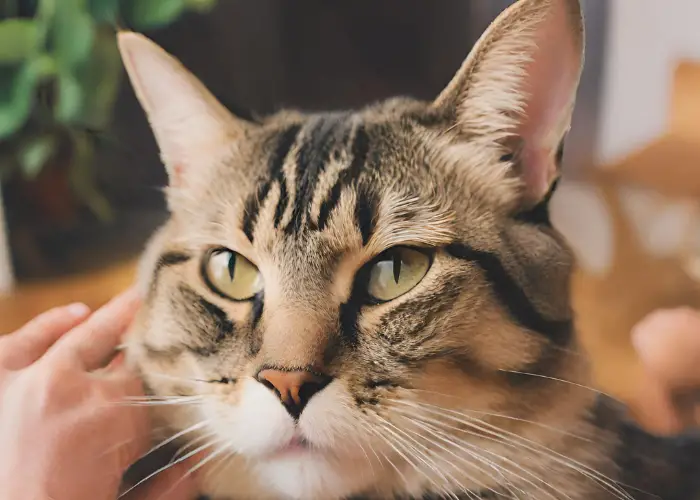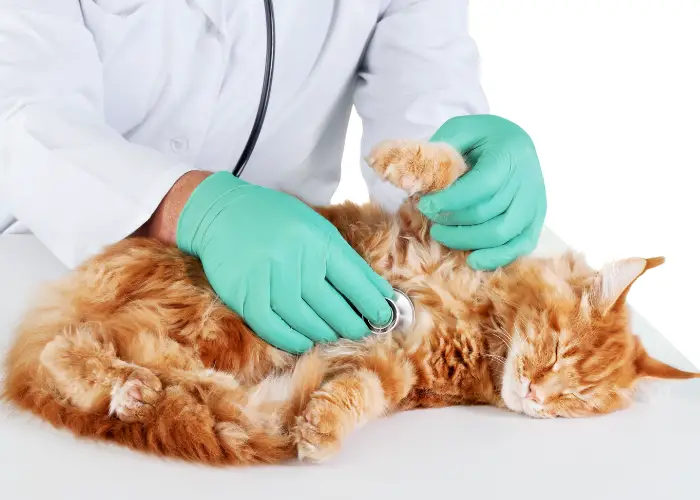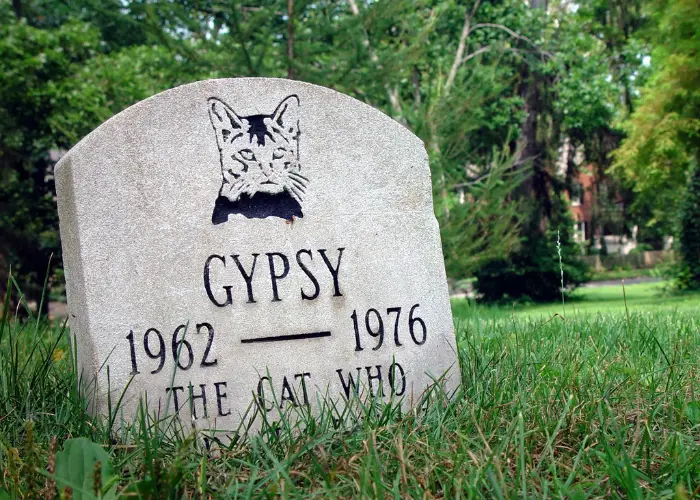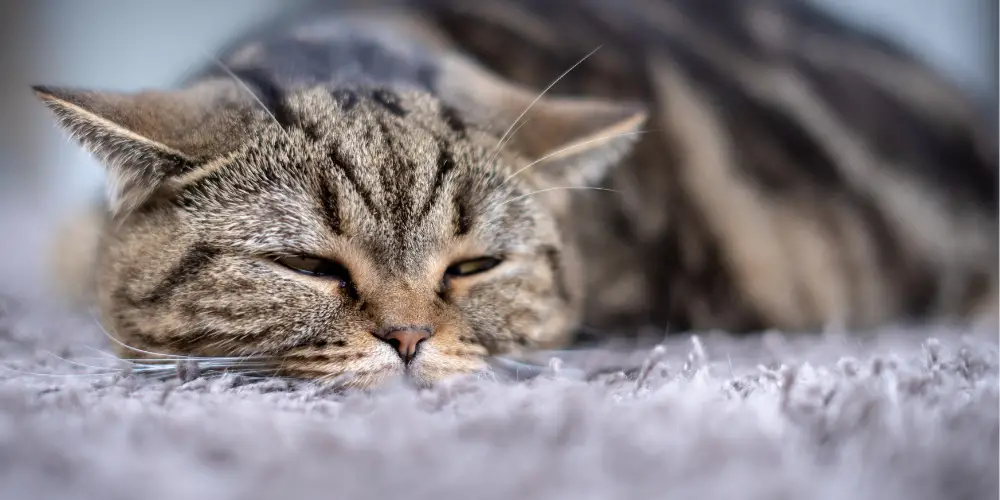The final chapter in a cat’s life can be a deeply emotional and challenging period for pet owners.
Understanding your cat’s behavior, needs, and the signs of their approaching end is key to providing compassionate care.
This guide offers an in-depth look into the end-of-life behavior of cats, mainly focusing on purring, and provides practical advice on palliative care, coping strategies for owners, and aftercare considerations.
Why Do Cats Purr When Dying?

Purring is a complex behavior in cats, often associated with contentment. However, purring takes on a different dimension at the end of life.
Cats may purr to self-soothe during times of pain or distress. The low-frequency vibrations in a purr have been scientifically linked to healing properties, offering comfort to the cat and potentially to their grieving owners.
Recognizing the Signs of a Dying Cat

As a cat approaches the end of its life, it often exhibits certain behaviors and physical changes that can serve as indicators to owners.
Recognizing these signs is crucial for providing the proper care and comfort during this sensitive period. Here’s a detailed look at some of the key signs:
1. Decreased Mobility and Lethargy
One of the most noticeable signs is a significant decrease in activity. Cats may move less, show reluctance or inability to jump or climb, and generally sleep more.
This decrease in energy levels is a response to their body’s declining strength.
2. Loss of Appetite and Water Intake
Cats nearing the end of their life may lose interest in food and water. This change can lead to weight loss and dehydration, further impacting their health.
It’s essential to monitor their eating and drinking habits and consult a vet for advice on maintaining nutrition and hydration.
3. Seeking Solitude
Cats are known for their independence, but they may become even more reclusive when they’re unwell.
A dying cat might hide in quiet, out-of-the-way places, avoiding interaction with humans and other pets. This behavior is partly due to their instinct to hide vulnerability.
4. Changes in Grooming Habits
Cats are typically meticulous about grooming, but those nearing the end of life may groom themselves less frequently, leading to a lackluster coat, matting, or even soiling. This change can be due to a lack of energy or an indication of discomfort.
5. Altered Vocalizations
Some cats may become more vocal, meowing more frequently or loudly, while others may become silent. If there’s a noticeable change in the way your cat vocalizes, it could be a sign of discomfort or distress.
6. Behavioral Changes
Changes in temperament can also occur. A previously friendly cat may become irritable or withdrawn, while a more aloof cat may seek more affection. These changes can be a response to pain, discomfort, or disorientation.
7. Breathing Difficulties
Labored breathing or changes in the breathing pattern can indicate critical distress. Respiratory changes may include rapid, shallow breathing or prolonged, heavy breaths.
8. Unsteady Gait or Disorientation
Cats in their final stages of life may appear unsteady on their feet or seem disoriented and confused. This can be due to weakness, dehydration, or other underlying health issues.
It’s important to remember that these signs can vary widely from cat to cat.
If you notice any of these changes, it’s advisable to consult with a veterinarian to understand the cause and discuss the best course of action for your pet’s comfort and care.
Palliative Care for Cats

Veterinarian Interaction and Decision-Making

Veterinarian interaction and decision-making are key components in managing a cat’s end-of-life care. Here’s a brief overview with key points:
- Regular Health Assessments: Routine vet check-ups are crucial for monitoring the cat’s health and adjusting care plans as needed, focusing on symptom management and comfort.
- Guidance on Palliative Care: Veterinarians advise on palliative care strategies, including medication, environmental adjustments, and nutritional support.
- Discussing Euthanasia: Veterinarians guide pet owners through the emotional decision-making process regarding euthanasia, ensuring it’s a humane option based on the cat’s quality of life.
- Emotional and Ethical Support: In addition to medical advice, veterinarians offer emotional support and ethical guidance, helping owners navigate difficult decisions.
- Post-Euthanasia Care: After euthanasia, veterinarians assist with decisions about the cat’s remains and provide resources for grief counseling and support.
Veterinarians are integral in ensuring compassionate care for the cat and supporting owners emotionally and ethically in their decision-making during the cat’s end-of-life phase.
Their role is crucial in guiding owners through this challenging journey with care and sensitivity.
Coping with the Loss of Your Cat

The loss of a cat is a significant emotional event for pet owners. Here are key points for coping with this loss:
- Embrace Grieving: Allow yourself to grieve, understanding that it’s a natural and necessary process; express emotions through various outlets like tears, writing, or talking.
- Seek Support: Find comfort in support from friends, family, pet loss support groups, or professional counseling to share your feelings and experiences.
- Create a Memorial: Honor your cat’s memory with a memorial, such as a photo album, tree planting, or a keepsake box with their favorite items.
- Reflect on Memories: Spend time recalling happy moments with your cat; sharing stories or looking at photos can help shift focus to positive memories.
- Allow Time to Heal: Recognize that healing is a gradual process and give yourself the time and space needed to adjust to the loss.
- Consider a New Pet: When ready, consider adopting a new pet, not as a replacement but as a way to bring new companionship and joy into your life.
Coping with the loss of a cat is a deeply personal experience that varies for everyone.
It’s a process that involves embracing your grief, seeking support, and finding ways to honor and remember your beloved pet.
With time, reflection, and support, you can find a way to heal while keeping the cherished memories of your cat in your heart.
Aftercare for Your Deceased Cat

Aftercare for a deceased cat is an important part of the grieving process, offering a way to handle their remains and honor their memory respectfully.
This phase involves making decisions that are sensitive and often emotional for the pet owner. Here are some key aspects to consider:
Deciding on Burial or Cremation
- Home Burial: Some owners bury their cats in a garden or another meaningful spot. This option allows for a personal memorial space, but check local regulations regarding pet burials.
- Cemetery Burial: Pet cemeteries offer dedicated spaces for burying pets. They provide a serene environment where you can visit and remember your cat.
- Cremation: Cremation is a common choice, offering flexibility in handling the remains. You can keep the ashes in an urn, scatter them in a special place, or even incorporate them into memorial objects like glass pieces or jewelry.
Memorialization
- Markers and Headstones: For burials, consider adding a marker, headstone, or plaque to mark the resting place. This can be personalized with your cat’s name, dates, and a meaningful message.
- Memorial Services: Holding a memorial or small ceremony can provide closure. Share stories about your cat, read poems, or simply reflect on your time together.
Handling Grief
- Grief and Mourning: Allow yourself time to grieve. Everyone’s process is different, and it’s important to acknowledge and accept your feelings during this time.
- Support Systems: Lean on friends, family, or pet loss support groups. Speaking with others who understand your loss can be comforting.
Considerations for Other Pets
- Impact on Other Pets: If you have other pets, they may also grieve the loss. Give them extra attention and monitor their behavior for any changes.
Keepsakes and Memorials
- Photographs and Keepsakes: Keep photographs or create a keepsake box with items like collars, toys, or other reminders of your cat.
- Planting a Tree or Garden: Planting something in memory of your cat can be a living tribute, providing a place to reflect and remember.
Aftercare for your deceased cat requires personal decisions about handling their remains and honoring their memory.
Choose burial, cremation, or another method that best respects your bond and feels right for you.
Conclusion

Navigating the journey of a cat’s end-of-life is an emotional and challenging experience filled with moments of reflection, care, and deep affection.
Understanding your cat’s end-of-life signs and providing palliative care are key aspects of their final days. Navigating tough decisions with a veterinarian and coping with the loss shape the final chapter of your shared journey.
Though heartrending, this journey is also a testament to the unconditional love and bond you and your feline companion share.
It’s a time to reflect on the joy, comfort, and companionship your cat brought into your life and to acknowledge the special place they will always hold in your heart.
Remember, each decision made during this time, from medical care to aftercare, is a final act of love and respect for your beloved pet.
As you move forward, allow yourself to grieve, remember, and heal at your own pace.
The memories of the love and special moments you shared with your cat will endure, becoming a comforting presence in your life.
Caring for a pet from their first days to their last is a profound experience. It’s filled with lessons of love, empathy, and the beauty of companionship.
In closing, cherish the memories, celebrate the life lived, and hold onto the love that will remain a part of you forever.
Your cat’s paw prints will stay etched in your heart, a timeless reminder of a cherished friend and a life well-lived.


